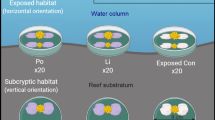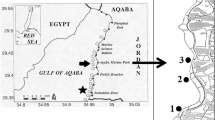Abstract
With the continuing decline of Acropora palmata throughout the Caribbean region, impacts of the gastropod corallivore, Coralliophila abbreviata, are becoming more noticeable. A snail removal experiment was performed in remnant A. palmata populations in the Florida Keys National Marine Sanctuary to quantify the area of coral tissue consumed by ambient snail aggregations and to assess the possible effectiveness of snail removal in conserving live coral tissue. Corals where ambient snail aggregations were removed maintained significantly more live tissue area during the 2-month experiment than those where feeding snail aggregations were left in place. The corals with feeding snails left in place lost more than 3 cm2 tissue day−1 on average. Thus, removal of C. abbreviata may be an effective measure for conserving depressed A. palmata populations, though secondary effects of such a manipulation remain to be carefully evaluated.
Similar content being viewed by others
Author information
Authors and Affiliations
Additional information
Accepted: 26 May 2000
Rights and permissions
About this article
Cite this article
Miller, M. Corallivorous snail removal: evaluation of impact on Acropora palmata. Coral Reefs 19, 293–295 (2001). https://doi.org/10.1007/PL00006963
Issue Date:
DOI: https://doi.org/10.1007/PL00006963




